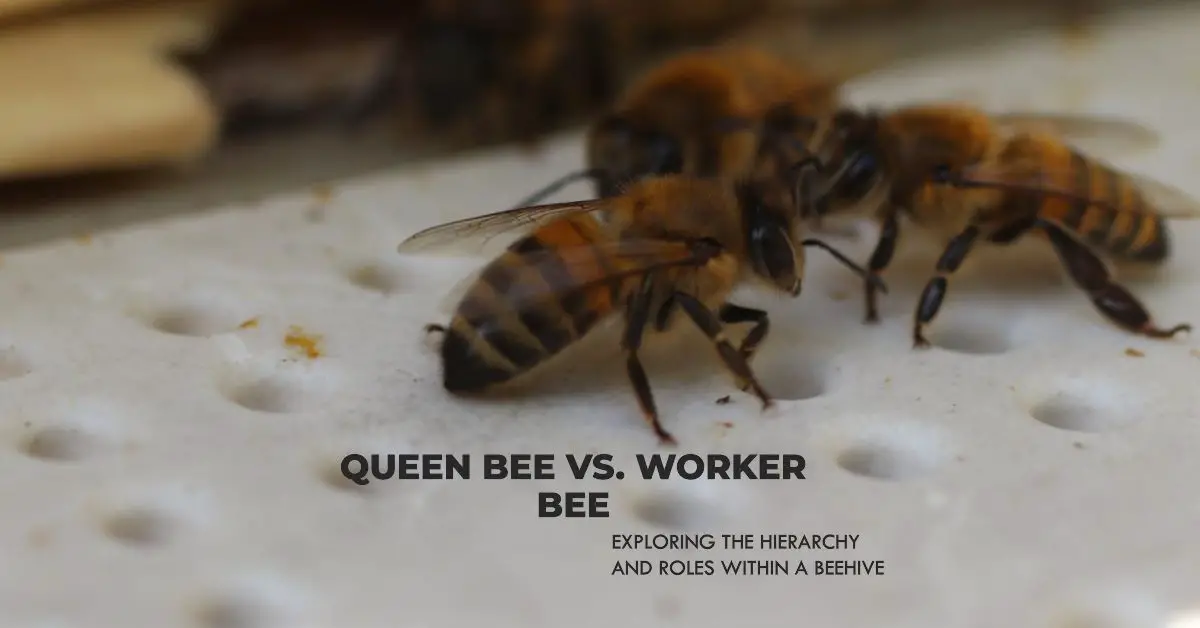Both Drone bee and worker bee are distinct members of honey bee colony. Drone bees Play important role in mating with queen bees. Drone bees do not have a duty to build nests or hives. On the other hand, the worker bees which are the majority Population of the colony take on a number of responsibilities. Hive construction and collecting Pollen and nectar are the duties of worker bees. In essence, the drone bee’s main focus is reproductive, while the worker bee is the industrious backbone of the honeybee colony.
Drone bees vs Worker bees Duties.
Worker Bees and Drone Bees do not have the same duties and both perform different duties in the colony. Here is the List of worker bee vs drone bee responsibilities.
Drone Bees
Mating
In the Reproductive season drone bees mate with virgin queen bees to reduce the population of the colony. Only drone bees mate with queen bees.
Patrolling
Drones have another duty to protect the hive from enemies and predators they have duty to patrolling the colony airspace.
Resource Storage
They help worker bees to store and save the pollen and nectars which are collected by worker bees.
Communication
One of the most important skills in drone bees is communication. They communicate with each other by using dance patterns which is called waggle dance.
Worker Bees
Foraging
Worker bees are actively involved in foraging for nectar, pollen, water, and propolis from flowers and other sources. They play a pivotal role in collecting resources essential for the hive’s sustenance.
Hive Construction
Worker bees demonstrate remarkable teamwork in building and expanding the hive, constructing honeycomb cells to store food, house brood, and provide space for other colony activities.
Nursing
They are responsible for nurturing and feeding the brood (eggs, larvae, and pupae) using royal jelly and pollen, ensuring the healthy development of future generations.
Cleaning
Worker bees maintain hive hygiene by removing debris, dead bees, and waste materials to prevent the spread of diseases within the colony.
Guard Duty
They act as the first line of defense, guarding the hive entrance against intruders and predators, and alerting the colony to potential threats.
Honey Production
Worker bees convert collected nectar into honey through a process of regurgitation and evaporation, storing it as a valuable food source for the colony during periods of scarcity.
Queen Care
Worker bees attend to the queen bee’s needs, providing her with food, grooming, and maintaining her living space to ensure her optimal reproductive performance.
Drone vs Worker Bee: Size
The size of worker and drone bees depend on the species of bees but usually drone bees are larger in size than worker bees. The average size of a drone bee is 15 to 17mm in length. They have Large size eyes which cover their entire head.
Worker bees are smaller in size than drone bees. The average size of worker bees are 12 to 15mm in length. Workers usually have more duties than drones like pollen collection which is important for bees.
The size difference between drone bees and worker bees is a key characteristic in distinguishing their roles and functions within the colony. The drones’ larger bodies and eyes suit their primary purpose of mating with virgin queens, while the smaller, more agile worker bees excel at tasks such as foraging, nursing, and building honeycomb cells. This division of labor ensures the colony’s productivity and survival.
Related Posts:
- Robber Bees Preventing from Harming Your Hive and Queen
- Bee Pollen Collection Methods
- Cat Bee Sting: Causes
Worker bees vs Drone bee: Feeding
The worker bees which are female have distinct feeding behaviors. They collect pollen and nectars which are used as a source of food. Queen bees eat the food which is collected by worker bees. Worker bees collect pollen from flowering Plants using their long tongue (Proboscis). These pollen are stored in the honey stomach through a process called trophallaxis.
Drone bees are male bees which do not participate in nectar collecting; they only mate with queen bees. Unlike worker bees, drones lack specialized structures for foraging and cannot collect food.
Conclusion
The drone bees and worker bees in a honeybee colony have distinct roles and responsibilities. Drone bees focus on mating with queen bees and patrolling the colony’s airspace while also aiding in resource storage and communication through their waggle dance. On the other hand, worker bees are the industrious backbone of the colony, actively engaged in foraging, hive construction, nursing, cleaning, guarding, honey production, and caring for the queen bee.




